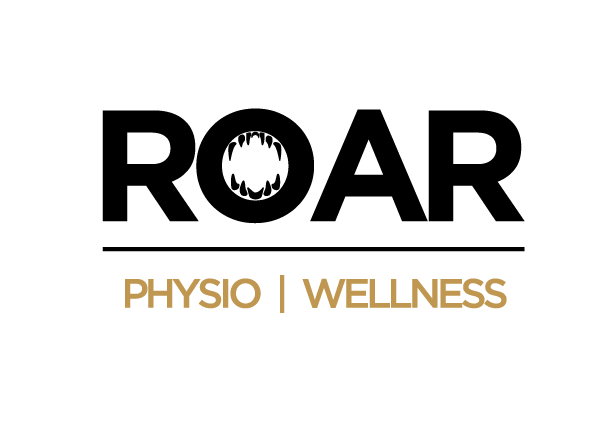A herniated disc can disrupt your daily life, causing discomfort, reduced mobility, and challenges in performing even simple tasks. Understanding the root causes and symptoms of this condition is the first step toward effective management. Physiotherapy offers a proven, non-invasive approach to treating herniated discs, providing relief from pain while restoring function and preventing recurrence. This blog explores how physiotherapy can help you recover from a herniated disc and achieve long-term spinal health.
Understanding Herniated Discs
A herniated disc happens when the soft, gel-like center of a spinal disc pushes through a tear in its tougher outer layer. This can irritate nearby nerves, leading to pain, numbness, or weakness, typically in the back, neck, arms, or legs.
Common causes of a herniated disc include:
- Wear and Tear: Age-related degeneration can weaken the outer layer of the disc, making it more susceptible to injury.
- Sudden Injury: Accidents, falls, or improper lifting techniques can result in herniation.
- Repetitive Strain: Activities that involve repetitive bending or twisting can place stress on the spine over time.
- Poor Posture: Sitting or standing with poor alignment can increase pressure on spinal discs.
- Genetics: Some individuals may have a predisposition to disc-related issues due to inherited factors.
Understanding the root causes of herniated discs helps physiotherapists design targeted treatment plans that address your unique condition.
Benefits of Physiotherapy for a Herniated Disc
Physiotherapy provides a safe, effective, and non-invasive approach to managing herniated disc symptoms. The benefits include:
- Pain Relief: Techniques like manual therapy, stretching, and heat or cold applications reduce inflammation and alleviate discomfort.
- Improved Mobility: Physiotherapy restores range of motion, helping you move more freely and with less pain.
- Strength Building: Strengthening the muscles that support the spine reduces stress on the affected disc and prevents further injury.
- Posture Correction: Addressing posture issues helps redistribute pressure along the spine, alleviating strain on the herniated disc.
- Personalized Care: Treatment plans are tailored to the individual, ensuring that therapy is effective and aligned with recovery goals.
- Avoiding Surgery: Many individuals can manage their symptoms and achieve full recovery without requiring surgical intervention.
Physiotherapy addresses both the symptoms and the underlying causes of herniated discs, providing long-term relief and improving overall spinal health.
Physiotherapy Techniques Used for a Herniated Disc
Physiotherapy uses a combination of techniques to target the symptoms and causes of herniated discs. Some of the most common treatments include:
- Manual Therapy: Gentle hands-on techniques, such as spinal mobilization or soft tissue massage, reduce tension and improve spinal alignment.
- Stretching Exercises: Targeted stretches relieve tension in the lower back, hamstrings, and other affected areas, promoting flexibility and reducing pressure on the disc.
- Strengthening Exercises: Exercises focused on the core and lower back muscles provide stability and support for the spine.
- Traction Therapy: Spinal traction gently decompresses the spine, alleviating pressure on the herniated disc and surrounding nerves.
- Heat and Ice Therapy: Heat helps relax tense muscles, while ice reduces inflammation and provides immediate pain relief.
- Ergonomic Training: Guidance on proper posture, lifting techniques, and workstation setup helps prevent further strain on the spine.
Each treatment is customized based on the severity of the condition and the client’s recovery goals.
How Long Does It Take to Recover From a Herniated Disc With Physiotherapy?
Recovery from a herniated disc varies based on the severity of the condition, the client’s general health, and how diligently they adhere to the treatment plan. People with mild herniated discs often notice significant improvement within four to six weeks of consistent physiotherapy.
Moderate cases typically take about eight to twelve weeks, with an emphasis on reducing symptoms and restoring mobility. For severe or long-standing herniations, recovery can span several months, with physiotherapy offering gradual but sustained relief over time.
Throughout the process, your physiotherapist will monitor your progress and adjust the treatment plan as needed to ensure the most effective recovery possible.
Exercises Included in Physiotherapy for a Herniated Disc
Exercises are a cornerstone of physiotherapy for herniated discs, focusing on strengthening and flexibility to support the spine. Commonly recommended exercises include:
- Cat-Cow Stretch: A gentle movement that alternates between arching and rounding the back to promote spinal flexibility.
- Pelvic Tilts: Strengthens the lower back and core while improving spinal alignment.
- McKenzie Extensions: Lying on your stomach and lifting your upper body gently to reduce pressure on the herniated disc.
- Hamstring Stretches: Stretching the hamstrings reduces tension on the lower back and supports recovery.
- Bird-Dog Exercise: A core-strengthening exercise that also improves balance and stability.
- Wall Sits: Strengthens the legs and lower back while teaching proper posture.
These exercises are tailored to the individual’s needs and supervised to ensure correct form and safety.
Get Your Roar Back
Is Physiotherapy Painful for Someone With a Herniated Disc?
Physiotherapy is specifically designed to reduce pain, not cause it, but some mild discomfort can occur, particularly during the early stages of treatment as the body adapts to new movements. Treatments are centred around low-impact, controlled exercises that improve mobility without placing undue stress on the spine.
Techniques such as heat and manual therapy are incorporated to manage discomfort effectively. Open communication is encouraged during sessions so that exercises or techniques can be adjusted to your comfort level. Additionally, exercises are introduced gradually to ensure they are both effective and manageable. Any initial discomfort usually subsides quickly, and your physiotherapist will work to ensure that your experience remains as comfortable as possible.
Physiotherapy for Herniated Discs: Tips for At-Home Management
Complementing physiotherapy with at-home care can accelerate recovery and provide additional relief from herniated disc symptoms.
- Maintain Good Posture: Avoid slouching when sitting or standing, and use ergonomic furniture to support the spine.
- Practice Gentle Movements: Avoid sudden twisting or bending that could aggravate the condition.
- Use Ice and Heat Therapy: Apply ice to reduce inflammation during flare-ups and heat to relax tight muscles.
- Follow Prescribed Exercises: Perform any at-home exercises recommended by your physiotherapist to maintain progress between sessions.
- Rest Strategically: Alternate periods of rest and light activity to avoid prolonged immobility, which can weaken the muscles supporting your spine.
- Stay Hydrated: Proper hydration supports spinal health and tissue repair.
Consistency with these self-care strategies ensures that your efforts at home reinforce the benefits of in-clinic physiotherapy sessions.
Can Physiotherapy Prevent Surgery for a Herniated Disc?
For many individuals, physiotherapy serves as a highly effective alternative to surgery by targeting the underlying causes of the herniated disc and managing symptoms without invasive procedures. Physiotherapy techniques focus on relieving pain and inflammation, reducing the need for medication or surgical intervention. By restoring mobility and strength, people can return to daily activities without requiring surgery. Moreover, physiotherapy addresses long-term prevention through posture correction, muscle strengthening, and education on safe movement patterns, significantly minimizing the risk of future herniations. While surgery may be unavoidable in severe cases, physiotherapy remains a proven first-line treatment for managing herniated discs effectively.
Recommended Lifestyle Changes to Support Recovery During Physiotherapy for a Herniated Disc
Making targeted lifestyle adjustments during physiotherapy can enhance recovery and reduce the likelihood of recurrence.
- Adopt a Healthy Diet: Focus on anti-inflammatory foods, such as fruits, vegetables, whole grains, and lean proteins, to support healing.
- Engage in Low-Impact Activities: Opt for swimming, yoga, or walking to stay active without straining your spine.
- Maintain a Healthy Weight: Reducing excess body weight decreases pressure on the spine and helps prevent further complications.
- Quit Smoking: Smoking can impair blood flow to the spinal discs, slowing recovery.
- Sleep on a Supportive Mattress: A firm or medium-firm mattress can provide better support for spinal alignment during sleep.
- Practice Stress Management: Techniques such as meditation or deep breathing can help reduce tension that exacerbates pain.
Incorporating these changes into your routine supports the healing process and promotes overall well-being.
Back Pain No More
If you’re living with the discomfort of a herniated disc, Roar Physio | Wellness is here to help. Our team of experienced physiotherapists provides personalized care to relieve pain, restore mobility, and strengthen your spine for lasting health. Don’t let a herniated disc hold you back—contact us today to schedule your appointment and take the first step toward a pain-free, active lifestyle.

